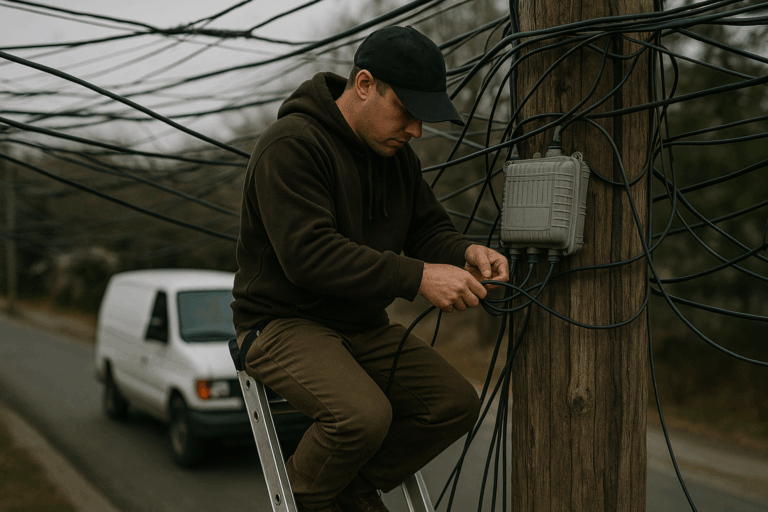ATSC 3.0 Is On Its Way
Updated on October 2, 2024ATSC 3.0 is on its way, set to replace the ATSC 1.0 standard we’ve had since 2009. There never was, nor will there ever be, an ATSC 2.0 due to the developers’ excitement about 3.0. So, what’s the difference between ATSC 3.0 and ATSC 1.0? Essentially, the ATSC 3.0 standard will allow you to interact with your TV in ways that were not possible before. Personally, I find it more appealing to advertisers than end-users. For example, you will be able to “Learn More” about a product in a commercial with the click of your remote. However, I don’t share the enthusiasm of the ATSC developers, and here’s why:
ATSC 3.0 Interactivity
TV has traditionally been used as a passive activity. Most people prefer to turn on the TV, find something within seconds, put the remote down, and relax. In my observation, the more interactive TVs become, the less people want to use them. We already have phones, tablets, iPads, and computers for interactive media. Many of us are also annoyed by ads, so being able to interact with commercials on a TV seems counterproductive. I see it as another unnecessary feature of Smart TVs. But that’s just my perspective. One of the biggest differences between ATSC 3.0 and ATSC 1.0 is that we will be able to interact with commercials just like on our phones.
ATSC 3.0 Needs the Internet
Another major difference between ATSC 3.0 and ATSC 1.0 is that ATSC 3.0 will require an internet connection for some of its features. It’s still unclear if ATSC 3.0 will work without the internet at all. This lack of transparency bothers me. Not all antenna viewers have or want internet access outside of their phones, and some people in rural or remote areas still can’t get internet access. Interestingly, over 25% of antenna viewers are over 65 years old, and many do not prefer complicated technology. The majority are families with young children.
ATSC 3.0 Availability and Testing
ATSC 3.0 is already being tested in several broadcast regions. As of now, you need the newest HDHomeRun DVR box or a newer Sony TV to receive ATSC 3.0 stations. As a technician, I tuned these stations on a Sony TV for a customer in the summer of 2021, but all the ATSC 3.0 stations were blank.
Additionally, the Sony TV preferred the ATSC 3.0 stations over the ATSC 1.0 stations, automatically deleting the ATSC 1.0 networks and keeping ABC, NBC, CBS, and Fox on the blank ATSC 3.0 channels. It took me some time to figure out that I had to go into the Channel Manager and manually select the ATSC 1.0 channels while deselecting the ATSC 3.0 ones. There’s no clear way to differentiate between the channels, so I had to assume the blank ones were ATSC 3.0 and deselect them.
Do I Have to Use ATSC 3.0?
Eventually, you will need to upgrade your TV to the new ATSC 3.0 standard or get an external tuner box, much like the transition from analog to digital in 2009. This time, we will be transitioning from ATSC 1.0 digital to ATSC 3.0 digital. However, don’t worry too much; TV stations are required to broadcast in ATSC 1.0 for a minimum of five years after ATSC 3.0 becomes widely available. Judging by how long broadcasters kept analog after the 2009 switch, the transition to ATSC 3.0 could take 10-15 years.
Common ATSC 1.0 and ATSC 3.0 Questions
Does ATSC 3.0 require a special antenna?
No. You do not need a special antenna for ATSC 3.0. Be cautious of marketing claims suggesting otherwise, as they may be misleading. Your current antenna should work fine as long as you’re within range of the signal.
Most good outdoor antennas can pull in TV signals from about 50 miles away or less, while indoor antennas can typically get stations from 20 miles away or less. Don’t believe the claims of antennas with 100, 200, or 300+ mile ranges—this is marketing jargon, and even a paperclip can act as an antenna within range.
What 2022 TVs have an ATSC 3.0 tuner built-in?
- Samsung 55-Inch Class Neo QLED QN90A Series – 4K UHD Quantum HDR
- Sony A80J 65 Inch TV: BRAVIA XR OLED 4K Ultra HD Smart Google TV
- LG OLED G1 Series 65” Alexa Built-in 4k Smart OLED evo TV
- LG OLED GX Series 65” 4k Smart TV
Will ATSC 1.0 go away?
Before the COVID-19 pandemic, the rollout for ATSC 3.0 testing was scheduled to take place in 2020. However, due to the pandemic, there were many delays. Originally, the FCC set a date requiring all broadcasters to keep ATSC 1.0 signals until 2023. Because of the delays, many test broadcasts are still rolling out. ATSC 1.0 may remain on the air for up to 15 years in some locations.
Does ATSC 1.0 support 1080p?
Yes, ATSC 1.0 supports 1080p high-definition digital TV. ATSC 3.0 will support up to 4K TV signals. However, many ATSC 3.0 broadcasts may still transmit in 1080p or lower during the transition.
Will ATSC 3.0 improve reception?
As of now, there’s no confirmed difference in reception between ATSC 3.0 and ATSC 1.0. Based on my experience as a technician, ATSC 3.0 signals are similar to ATSC 1.0 signals when it comes to the 6 MHz bandwidth channels that stations broadcast on. However, I have yet to see a consistent, successful ATSC 3.0 signal, as there are still bugs to work out. While ATSC 3.0 is supposed to improve performance, the potential for signal compression could make it worse, causing more pixelation.
Is ATSC 3.0 backward compatible?
Yes. A new TV with built-in ATSC 3.0 will still tune in older ATSC 1.0 signals. However, ATSC 1.0 TVs won’t be able to tune in ATSC 3.0 signals without an external tuner.
Updated Insights (October 2024)
The ATSC 3.0 rollout continues, but the technology is still being refined, with many regions in testing phases. More TV manufacturers are integrating ATSC 3.0 tuners, but it’s not yet widespread across all models. The five-year requirement to maintain ATSC 1.0 broadcasts gives consumers time to transition, but delays caused by COVID-19 have stretched the original timeline.
A key concern remains the necessity for internet access for some of ATSC 3.0’s interactive features, which could pose accessibility challenges, especially in rural areas or for older users. Although the technology promises enhanced viewing experiences, its full impact on reception and usability is still being evaluated.






6 thoughts on “ATSC 3.0 vs ATSC 1.0 – What’s the Difference?”
Thank you!
Hi Jeramie,
Thank you for the well written article with excellent information, especially regarding antennas. As a recently retired RF engineer with many years of experience in antenna design, it is refreshing to read an article from someone who actually knows what they are talking about. keep up the good work.
“It is unclear at this time if ATSC 3.0 will work at all WITHOUT internet.”
It works great without the internet. Internet is a component that can be used to receive enhanced services, but is not required to receive NextGen TV.
1. ATSC 1.0 was adopted by the FCC in 1996. The transition started on 10/31/1998. The analog NTSC standard went off the air in 2009.
2. There was an ATSC 2.0. It did not gain adoption.
1. ATSC 1.0 was adopted by the FCC in 1996. The transition started on 10/31/1998. The analog NTSC standard went off the air in 2009.
2. There was an ATSC 2.0. It did not gain adoption.
3. ATSC 3.0 does NOT require the Internet to watch TV. It does require a return channel if you want to use the interactive features.
4. The primary differences between 1.0
and 3.0 are:
a) 1.0 uses 8VSB modulation using MPEG-2 transport streams. 3.0 uses OFDM modulation with the complexity varying on whether the broadcaster wants higher nitrates or more reliability for functions like mobile/handheld, and its IP based, which makes it directly compatible with WiFi and internet transmissions.
So it’s has to be a hardware fixed to go. From 1 to 3
a firmware upgrade won’t fix ?